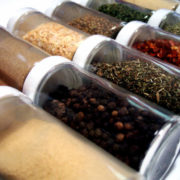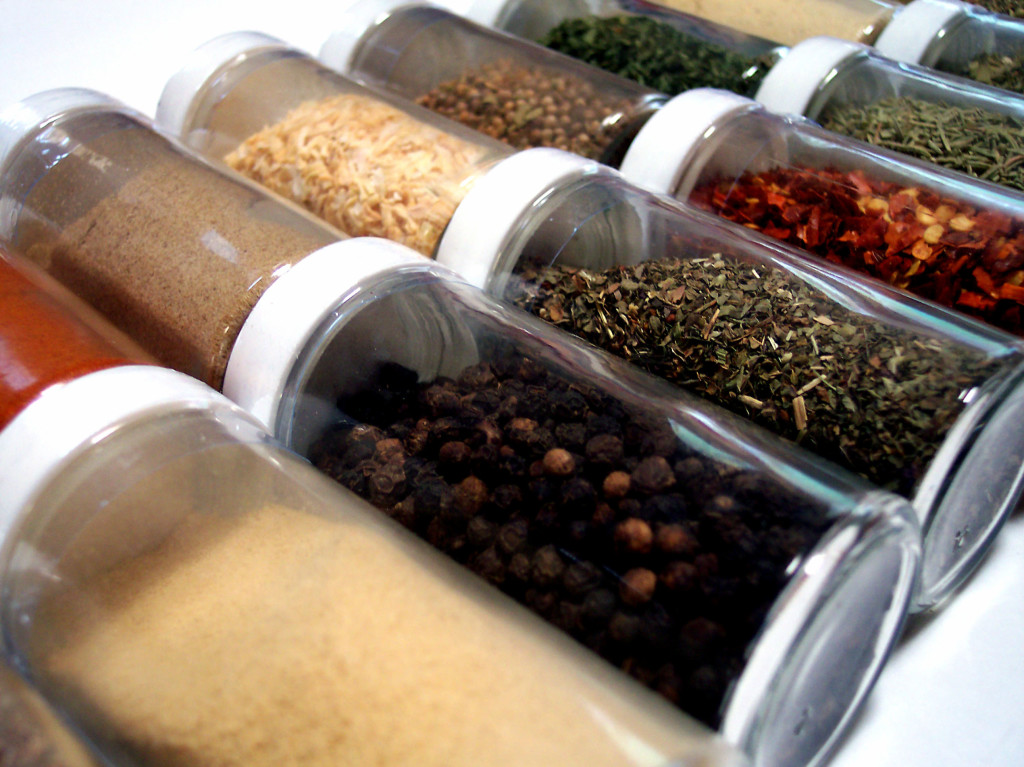Adding Spices To Your Home Brew
So the weather is getting colder and now, is the time of year when you start seeing a lot of seasonal winter warmer style beers available in the shops.
A lot these beers have in common the addition of spices to add a further layer that really changes a beers flavour.
I have to say that I am not a big fan of adding herbs and spices to my beers and if I do I try to do it in a subtle, balanced way. I also try and find styles of beer that suit these additions.
There are varieties of beer like Belgian Wit and Saisons for example that use herbs and spices. It is with these styles of beers that you can see that adding in spices can be done in a way where the beer is still balanced. The spices don’t overpower the beer or vice versa.
Belgian Witbier for example commonly uses coriander seeds and orange peel. These blend perfectly with the spicy phenolic character of the yeast. Don’t go thinking that you can’t introduce some spice to your brews atany time of year.
What Spices Can You Use?
I will quickly run through some of the herbs spices that you can experiment with. I won’t go into too much detail here because I want to cover how you go about using them. I will look at what each of these herbs and spices add in a future post. Here are a few among others:
Allspice, Star Anise, Aniseed, Basil, Bay, Caraway, Cardamom, Cinnamon, Cloves, Coriander, Fennel, Ginger, Heather, Juniper, Lavender, Liquorice, Mint, Nutmeg, Orange Peel, Pepper, Rosemary, Sage, Vanilla, Yarrow.
You can see straight away, all these spices are going to add something to a beer. Beer is already complex and adding any of these spices will either enhance the flavour or possibly make the beer worse. How much to add is slightly trickier. You don’t want to overpower the whole batch. Adding them into the boil or fermenter is usually the case, take a look at the table below reproduced from BYO for an idea of how much of each spice to add.
| Ingredient | Part of plant used* | Maximum in 20 Litre Batch | Maximum amount in a 5 gallon batch | When added to brewing process | How long? (minutes unless otherwise noted) |
|---|---|---|---|---|---|
| Alecost | leaf | 28 gram | 1 ounce | boil | 60 |
| Allspice | seed, whole | 5 gram | 0.2 ounces | boil | 45 |
| Anise Hyssop | flower | 28 gram | 1 ounce | boil | 15 |
| Bitter Orange Peel | peel | 28 gram | 1 ounce | boil | 15 |
| Cacao | bean (“nibs”) | 226 gram | 8 ounces | secondary fermenter | 10 days |
| Cardamom | seed, ground | 5 gram | 0.2 ounces | boil | 30 |
| Chamomile | flower | 56 gram | 2 ounces | boil | 45 |
| Chile | pod, fresh | 7 gram | 0.25 pound | steep | 15 |
| Cinnamon | bark | 4 sticks | 4 sticks | boil | 30 |
| Cloves | bud, whole | 10 buds | 10 buds | boil | 30 |
| Coffee | bean, ground and extracted in water | 12 shots espresso | 12 shots espresso | at kegging or bottling | extract is part of finished beer |
| Coriander | seed, crushed | 56 gram | 2 ounces | boil | 15 |
| Cowslip | flower | 28 gram | 1 ounce | boil | 15 |
| Dandelion | leaf | 56 gram | 2 pounds | boil | 60 |
| Elderberry | flower | 56 gram | 2 ounces | secondary fermenter | 2 days |
| Elecampane | root | 56 gram | 2 ounces | boil | 60 |
| Fennel | seed, ground | 5 gram | 0.2 ounce | boil | 45 |
| Ginger | root, fresh grated | 170 gram | 6 ounces | boil | 15 |
| Grains of Paradise | seed, ground | 2.5 gram | 0.1 ounce | boil | 5 |
| Greek Oregano | leaf | 56 gram | 2 ounces | boil | 45 |
| Heather | flower | 12 cups | 12 cups | boil | 90 |
| Horehound | leaf | 56 gram | 2 ounces | boil | 60 |
| Hyssop | flower | 28 gram | 1 ounce | boil | 60 |
| Juniper | cone (“berry”) | 5 gram | 0.2 ounce | boil | 60 |
| Juniper | leaf | 113 gram | 4 ounces | boil | 60 |
| Labrador Tea | leaf | 113 gram | 4 ounces | boil | 60 |
| Lavender | flower | 28 gram | 1 ounce | steep | 15 |
| Lemon Balm | leaf | 28 gram | 1 ounce | steep | 15 |
| Licorice | root | 14 gram | 0.5 ounce | boil | 60 |
| Milk Thistle | leaf | 56 gram | 2 ounces | boil | 45 |
| Mugwort | leaf | 56 gram | 2 ounces | boil | 60 |
| Nettle | leaf, fresh | 28 gram | 1 pound | boil | 60 |
| Nutmeg | pod, ground | 2.5 gram | 0.1 ounce | boil | 30 |
| Oak | wood chips or cubes toasted | 85 gram | 3 ounces | secondary fermenter | 20 – 40 days |
| Rose hips | fruit | 56 gram | 2 ounces | boil | 60 |
| Rosemary | leaf | 28 gram | 1 ounce | boil | 45 |
| Sarsaparilla | root | 14 gram | 0.5 ounce | boil | 60 |
| Spruce | buds, fresh tips | 170 gram | 6 ounces | boil | 60 |
| Star Anise | pod, crushed | 28 gram | 1 ounce | boil | 30 |
| Sweet Basil | leaf | 56 gram | 2 ounces | steep | 15 |
| Sweet Gale or Bog Myrtle | leaf | 56 gram | 2 ounces | boil | 30 |
| Sweet Orange Peel | peel | 28 gram | 1 ounce | boil | 15 |
| Sweet Woodruff | flower | 28 gram | 1 ounce | secondary fermenter | 2 days |
| Sweetgrass | leaf | 56 gram | 2 ounces | secondary fermenter | 2 days |
| Vanilla | bean, whole extracted in alcohol | 2 beans | 2 beans | secondary fermenter | extract is part of finished beer |
| Wintergreen | leaf | 56 gram | 2 ounces | steep | 30 |
| Wormwood | leaf | 5 gram | 0.2 ounce | boil | 15 |
| Yarrow | leaf | 56 gram | 2 ounces | boil | 30 |
When adding spices to your home brew, think carefully about what it will bring to the taste, will it conflict or enhance the character. There is a way to test out spices in beers without affecting the whole batch, let me explain this process now.
How Do You Get Them in Your Home Brew
There are a couple of ways to start using herbs and spices in your home brew so I will cover a few aspects here.
First off when I brewed my first spiced beer I had a recipe so I did as I was told and put the stated amounts of each spice in at the specific point.
However I soon thought that I have a ton of spices sitting in a rack and I want to try my own variation. I don’t want to ruin a whole 5 gallon batch and end up with a beer that tastes just of Cinnamon. There is an easy way you can experiment with spices on a small scale just one bottle at a time.
All you need is a small amount of cheap vodka, your spices and a bottle of beer.
- Take some spice you like the look of. Say you want cardamon, fennel and juniper berries measure them and note the quantities you used and put them in a jar.
- Cover with a small amount of the vodka. You want roughly twice the amount of vodka to spices.
- Allow this to infuse for a few days.
- Now pour your beer into a glass and add a drop or two of the vodka spice mix (a pipette is good for this).
- Stir the vodka into the beer and test it. Decided if its enough, is it too strong, is one spice overpowering the rest. As you added such a small amount you may decide it’s not strong enough so you can keep adding until you get a quantity you like.
- It now a case of when you find a mix you like to scale it up to your brew length. If you added 8 drops in your pint and your brew length is 40 pints you need 320 drops. This works out at around 16ml of vodka (this assumes a drop is 0.05ml).
Of course you may need to add more or less of the spice solution according to your beer and spices you are using.
It is easiest to add this solution at the point of bottling. You can just add this to your bottling bucket with any priming sugar solution and rack the beer on top to get it thoroughly mixed.
Adding this vodka solution won’t add up to much extra alcoholic strength so don’t worry to much about affecting the ABV.
The other option open to you is to add the spices directly into the beer. I like this method as it doesn’t need as much prep and …. I am lazy.
It is important though you have a rough idea of the quantites and ratios that you are going to add to the beer before hand because you don’t want anything too overpowering or underwhelming.
A good way to get an idea of quantities and combinations is to either test, in small batches, or to study some recipes and see what other people are doing. Ultimately though it is all about trial and error.
If you are adding spices straight into the beer the best time to add them is around the last 5 minutes of the boil. You don’t want the spices to lose all their aromatic qualities. Things like orange peel can be added for longer to extract more flavour.
So there we have it. I think this really just scratches the surface so will follow this post up soon and go into more detail on what each of the spices adds in terms of flavour and some combinations I have used and seen.




Leave a Reply
Want to join the discussion?Feel free to contribute!